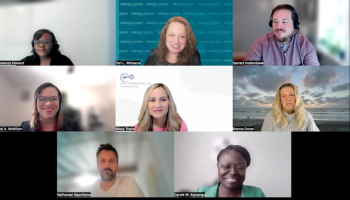
Hospital Superbugs on the Rise Despite Prevention Efforts, Study Shows
Although infection control has been substantially ramped up in Canadian hospitals since the SARS crisis of 2003, resistant bacterial infections post-SARS are multiplying even faster, a new Queen's University study shows.
Led by Queen's University epidemiologist Dr. Dick Zoutman, the national survey is a six-year follow-up to a study that was undertaken in 1999, prior to the outbreak of SARS (Severe Acute Respiratory Syndrome).
The original, groundbreaking study, funded by the Public Health Agency of Canada, showed that most Canadian hospitals fell seriously short in preventing patients from getting hospital infections. The researchers estimated then that about 250,000 patients a year experience infected surgical wounds, bloodstream infections, and antibiotic-resistant organisms while in hospital -- and that 8,000 of these patients will die.
Findings from the new Queen's University study -- which draws on data from 2005 -- will be published in the December issue of the American Journal of Infection Control.
While human resources to combat the problem have increased significantly - particularly in Ontario and Quebec -- the number of hospital-acquired infections has risen even faster. "The combination of more infection control practitioners and activity, but also more bugs, hasn't taken us where we want to be," says Zoutman, who is director of infection prevention and control at Kingston General Hospital. "We've made some strides, but there is still a lot to do. We'd like to see increased surveillance and control activities, which our study indicates haven't been achieved yet."
Since the first survey was conducted, the rates of methicillin-resistant Staphylococcus aureus (MRSA) have more than doubled across Canada, from 2.0 to 5.2 per 1,000 hospital admissions. Another deadly bacterium, vancomycin-resistant enterococcus (VRE), was found in 77 percent more hospitals in the 2005 survey than in 1999.
Although more people are working in the area of infection control today, a smaller percentage is certified, notes co-author of the study Doug Ford, a research associate with Queen's Department of Pathology and Molecular Medicine. Since certification is a two-year process, this may be the result of a lag in new personnel finishing their training, he adds.
Infection control activities in Canada have been crisis-driven, the study suggests. Both the 2003 outbreak of SARS in Ontario and the 2002-04 C. difficile crisis in Quebec spurred greater investments in acute care hospital infection control program resources and activities in those provinces. Ontario staffing levels and infection surveillance activities grew significantly between 1999 and 2005, while a comparable increase in staffing levels and infection control activities occurred in Quebec over the same period.
"Taking into account the increasing rates of antibiotic-resistant organisms and threats of avian and pandemic influenza and SARS-like epidemics, considerable additional investment in infection control resources and programming is needed in Canadian acute care hospitals," the researchers say. "Not making the required investments would be shortsighted and might suggest that we have already forgotten the lessons we learned from the outbreaks of SARS and C. difficile."
Newsletter
Stay prepared and protected with Infection Control Today's newsletter, delivering essential updates, best practices, and expert insights for infection preventionists.






